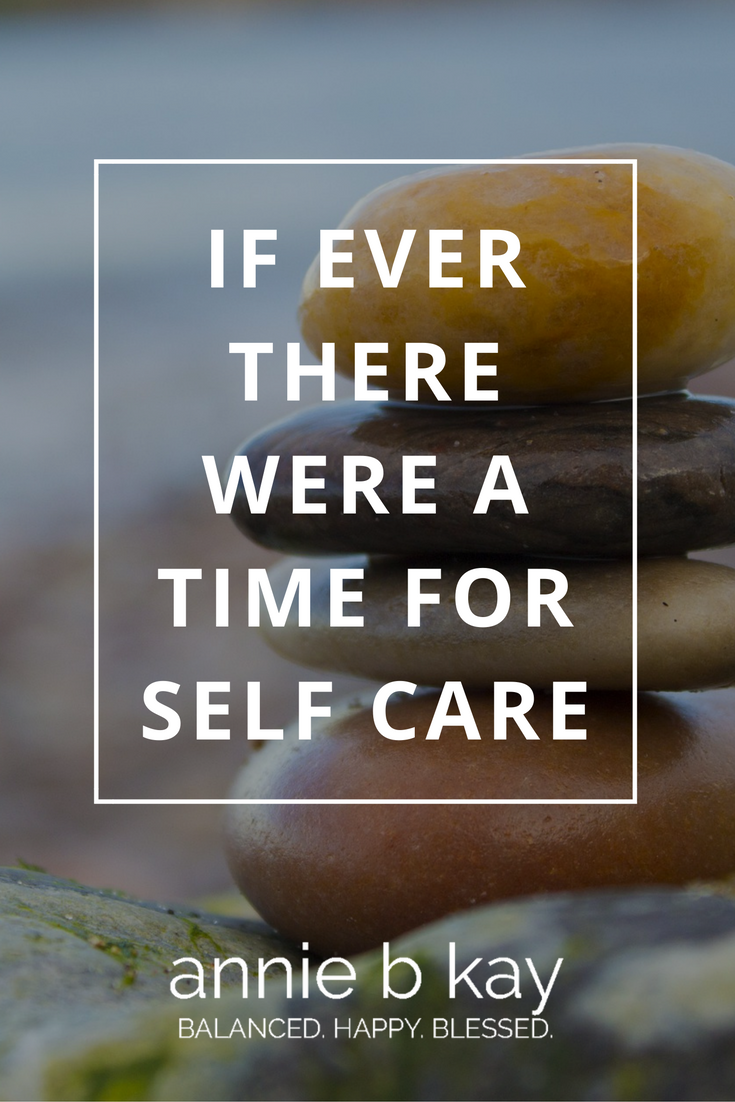
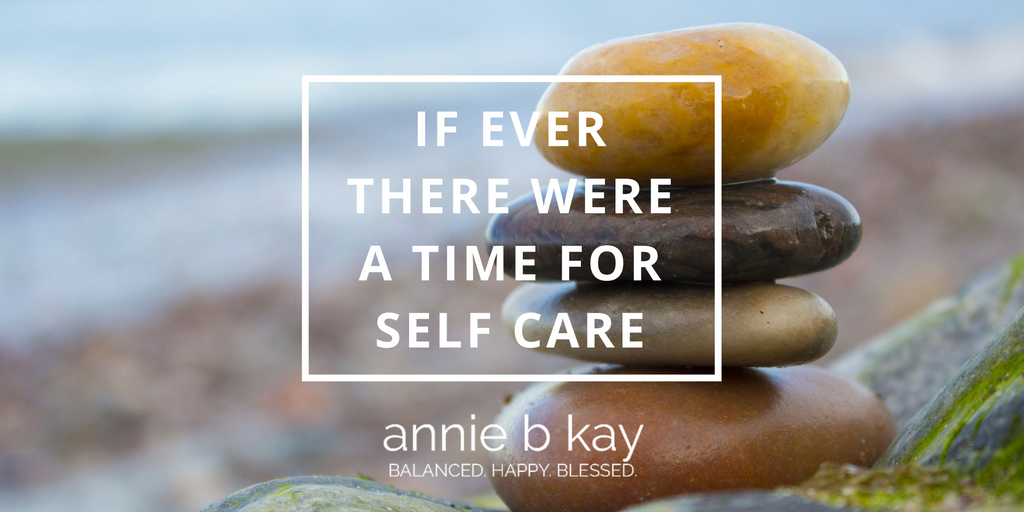
That would be now.
Regardless of where you stood on Tuesday’s election, it’s been a raw and wild ride. Change is certain. I hear many people say they’re scared. In the days leading up to the election, I was anxious. But now, not so much. By Wednesday I’d whipped right by fear and had gone straight to anger. Anger at those who didn’t vote. Anger that instead of traveling around this wonderful and really hurting country on a leisurely 2-year listening tour, Hilary chose to make tens of millions of dollars giving private speeches after she left the state department. I’m pretty mad. I’m even mad at Trump for the way he chose to run, and really pissed that it worked. I’m disappointed in everyone! Exhale, exhale, exhale. OK.
So now what?
It’s an excellent time to get strong – to get physically stronger. Start slow or not so slow, but if you wish you were in better physical shape, now is a really good time to take a step – look to your community center, or a gym or yoga or pilates studio. I recently joined a twice-weekly ‘get fit’ challenge and it’s impressive in what it’s doing to me, and I doing things and working at an intensity I simply would never ever do on my own. It’s a good thing.
It a wonderful time to get clear on who you are and what you mission in this gorgeous life might be. To that end, you might read my friend, mentor, colleague’s excellent book The Great Work of Your Life by Stephen Cope. He asks some good questions that I hope help you frame out what your dharma might be. You can also work with plants – they’ll give you the score if you ask them.
Plants can offer healing self care. Herbalists would say it’s a wonderful time for nervines – rose, skullcap, tulsi to name just a few – these are plants that sooth and feed the nerves. Abhyanga oil massage is another nerve soother – I’ve been dipping myself in oil daily just because so many people are so upset, and the news is upset, and as I mentioned I’m pretty mad myself.
Something is on the way, I know not what. So, if you are scared and traumatized by Tuesday’s election. Rest, eat and cry. Get a massage or seven. That’s OK. But as soon as you are ready, there’s plenty to do and plenty to be.
No matter who you voted for last week, it’s time to get active, personally, collectively. May all be blessed.
Be well.
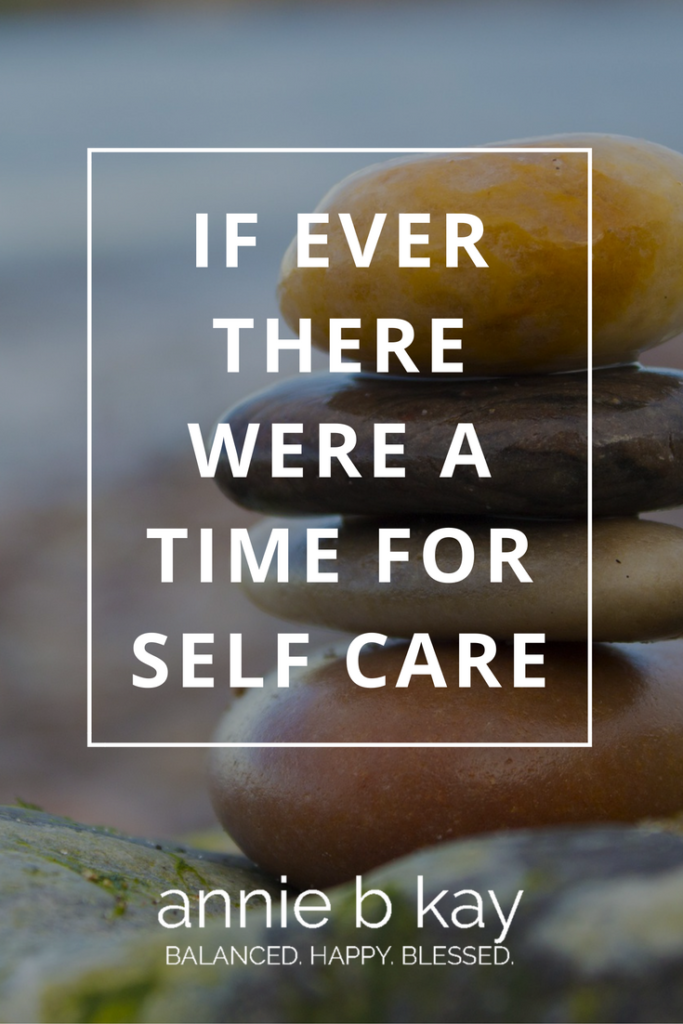
pinterest
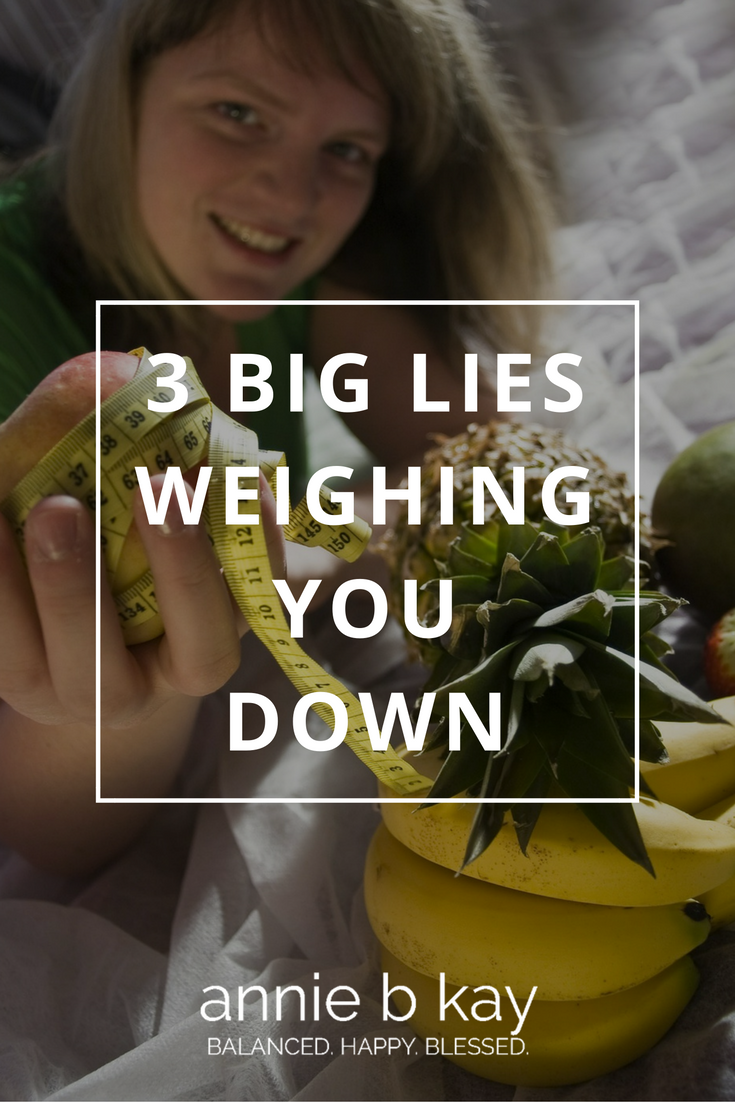
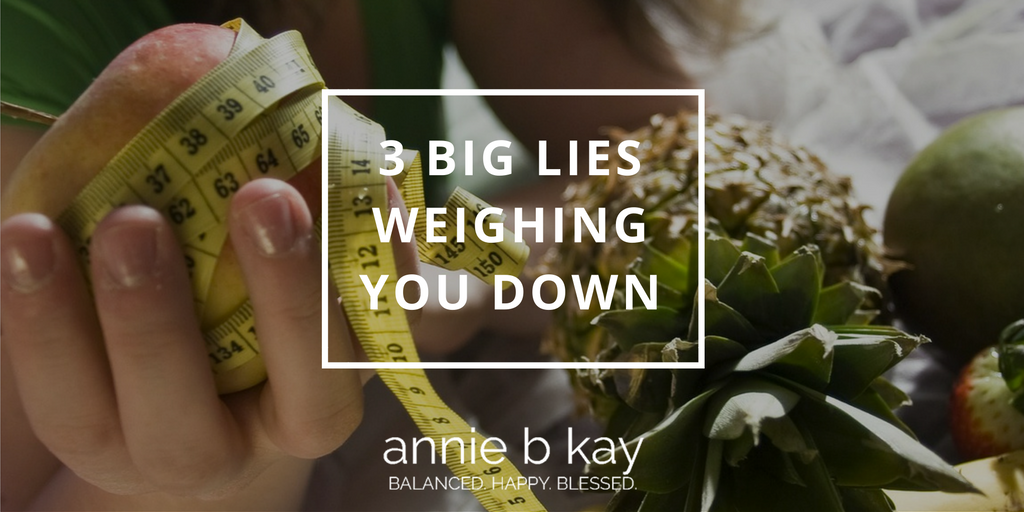
There are more than 3 lies being fed to those trying to follow healthy lifestyles that lead to natural healthy weight, but these three are an excellent place to start. These 3 lies point to the truth of feeling better, being healthier, and authentically expressing and doing what you are here to express and do.
Did you know that size does not necessarily correlate with health? In over twenty years of clinical nutrition practice, I have seen many people – women and men, who are technically overweight yet metabolically healthy. Too, I have seen many women and men who are slim yet metabolically imbalanced in mind, body, and spirit. In today’s culture, with a highly refined diet and ever-increasing stress, for many it is harder than ever to lose weight. It’s not impossible, but it just may be aiming at the wrong target.
You and I have a job to do. It’s to stop feeling bad about who we are, and start taking fantastic care of ourselves. It’s to stop believing lies and half-truths designed to make us feel bad and to follow healthy satisfying and balanced eating and physical activity that works to make us the healthiest, happiest version of ourselves that we can be.
Here are 3 big lies that are keeping you heavy, and the truth that will point the way to feeling fantastic:
1.If you can’t lose weight there is something wrong with you.
NOT TRUE!
It’s not you. For years I’ve spoken to women who feel responsible for weight gain and feel like failures because they can’t achieve the weight they were in high school. They are successful in all areas of life – big wage earners (despite economic discrimination) who run families, have healthy relationships, and yet in this one area, unsuccessful.
The toxicity in the food supply, years of metabolic dysfunction, an unhelpful mindset, and the resulting stress is the perfect storm to feeling unwell and defeated. The fact of the matter is that what will make you feel better – no matter the number on the scale – are your daily habits and choices, and your mindset.
2. You have to be ever-perfect at a diet for it to work.
NOT (usually) true!
Deprivation diets don’t work. Starvation or fasting diets, even intermittent fasting, which has some merit, has the dirty little secret of lowering your metabolic rate, sometimes by a lot and for a very long time. There may be a variety of advantages to lowering metabolic rate (it may make you live longer), but please go in with eyes open. If eating less is not something you’d be happy doing evermore, save yourself the time and grief – don’t do it.
The truth of the matter is that small changes, that you are able to practice day after day without feeling deprived, is the only way forward. Most people can’t transform overnight, but I have seen lots of folks do great with a step-by-step path. If you feel the energy of transformation, there are ways of taking advantage of it without it setting the stage of yo-yoing your way to nowhere.
3. It’s all about calories.
So NOT true!
Energy balance (calories in as food and drink minus calories out as activity and metabolism) is important but quality (nutrient density, macro-nutrient balance and quality) matters just as much or more. If you have inflammation in your body – if your joints are achy, if you are bloated (swollen, really) you can do ‘all the right things’ for weight management and not get anywhere. Cooling inflammation with thoughtful choices is critical and independent of calories. Beyond that, how you eat matters as much (even more) than that. Taking your time to chew your food (can you slow down to take 10 chews per bite?), and taking a few moments to breathe and enjoy your food with all five senses can go a long way to improving your digestive wellness and your weight.
As a high-schooler, I developed bulimia. It was a seemingly easy (or at least doable) solution to an impossible problem; how to eat all those cheeseburgers and cokes and milkshakes that everyone else was eating and still look as slim as the models in the magazines. I could almost do it. But not quite. I tell that full story in Every Bite Is Divine.
For decades now, I have been thinking and writing about how yoga can help us to be more fully aware of who we are. But there is a shadow underfoot. I’m a 55-year-old post-menopausal woman and I feel fantastic and beautiful. I’m an excellent yoga teacher at the top of my game. I don’t, however, fit the beauty ideal of the yoga world. The media world of yoga is getting awfully slim. Sigh.
But that’s not the whole of the yoga world. There are beautiful women and men of every age, of every size, or every color and creed using the gifts of yoga to feel better, look better, live longer and be the fullest expression of who they are today. If that’s you, look around this space. See if there is something here for you. Come be part of the conversation of how we live and love each day in a balanced, happy expression of our unique and blessed place in the wonder of nature and life.
The best way to participate in the conversation is to sign up for my monthly newsletter. My newsletter takes you deeper into the practice of being fully and happily blessed no matter who you are.
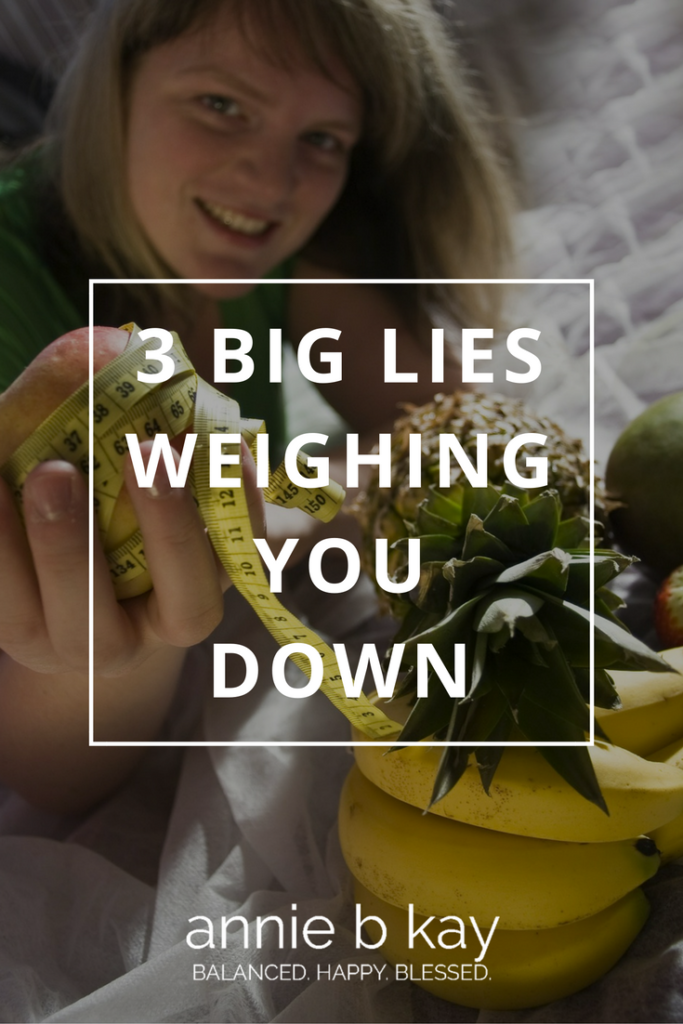
pinterest
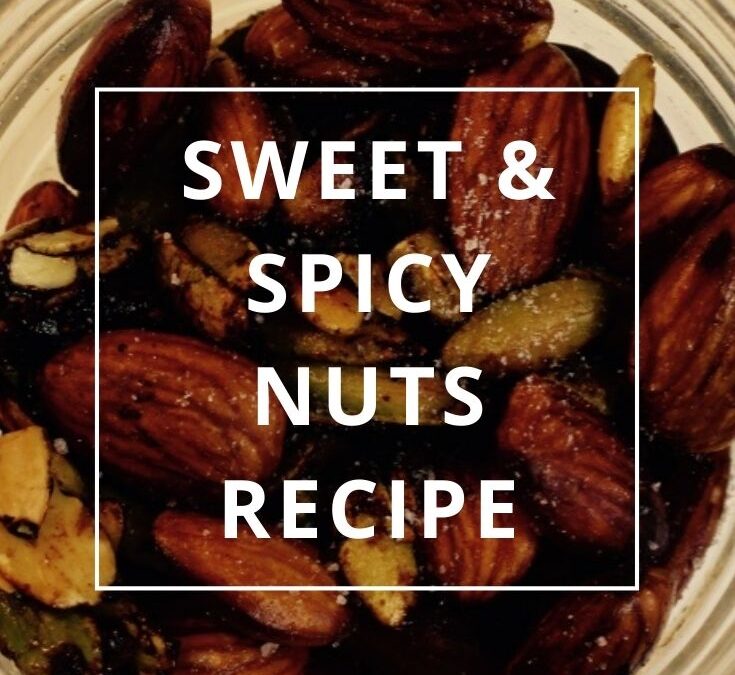
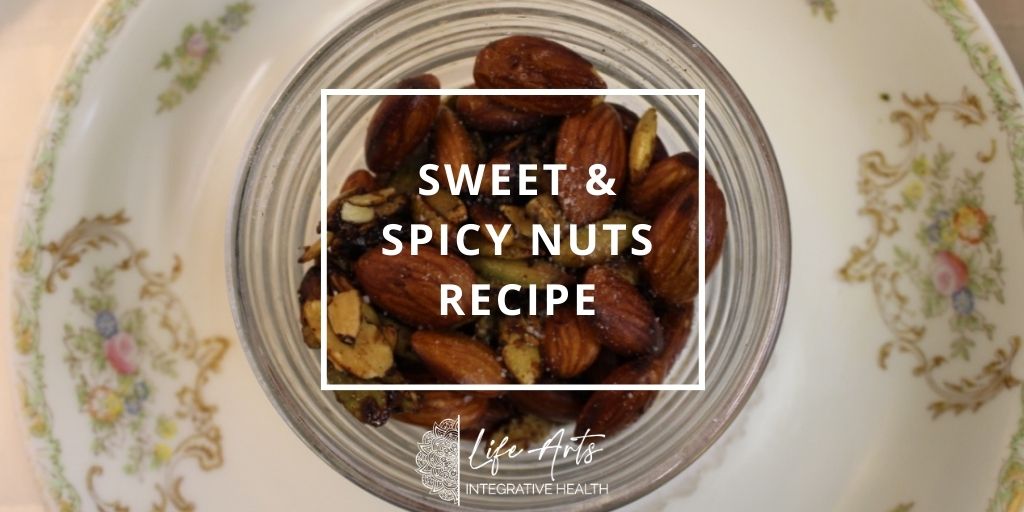
As the cooling breeze of fall blows through, it’s time to spice things up. Not only do spices add a lovely kick of flavor to fall and winter fare, but spices are filled with phytonutrients; health-enhancing compounds that give us the immune boost we need through the transition to colder months. Adding a little sweet, a little heat and a bit of spice to nuts does a body good energetically this season as well. May this sweet & spicy nuts recipe warm you inside and out. I use these nuts to top warm wilted salads, on soups, or over warm fruit for a nutrient-dense treat. It would also be delicious on top of my Vegan Maple Custard recipe.
This morning I did my seasonal overhaul of cooking ingredients – putting away the cooling flavors of summer and bringing spices and heating ingredients an easier reach from the stove. I went to the grocery to gather spices – cayenne, cinnamon, mace, allspice, nutmeg – the flavors of fall. It’s one way I honor the wheel of the year, ever turning.
Sweet & Spicy Nuts Recipe
Ingredients 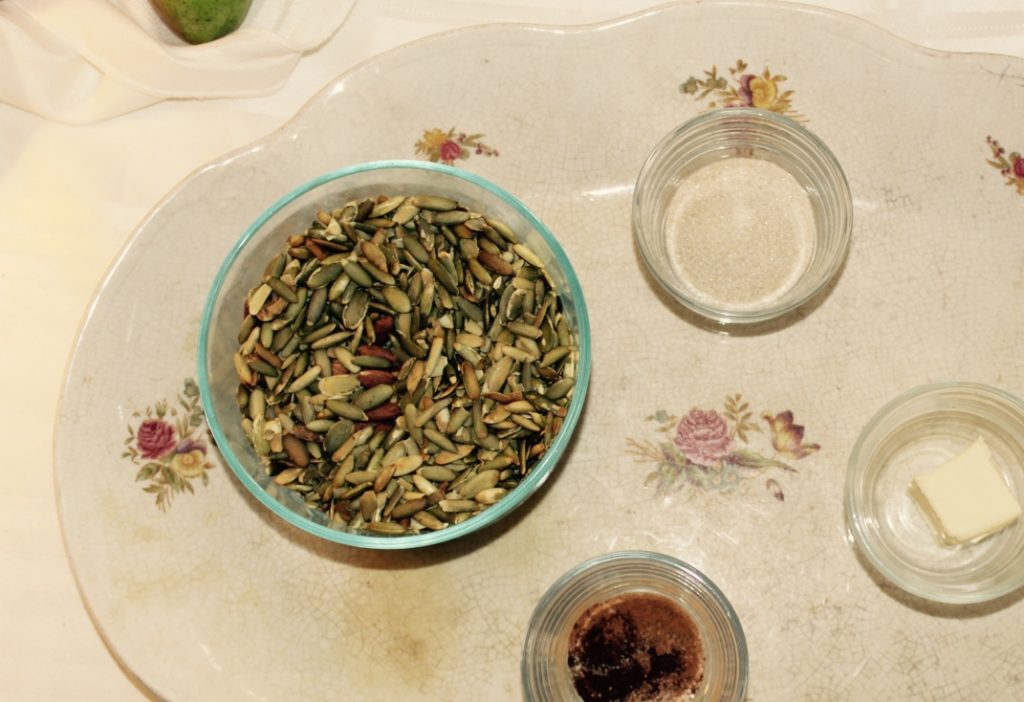
- 2 cups raw nuts and/or seeds – I used pepitas (pumpkin seeds), almonds, cashews and a few Brazil nuts
- 1 1/2 Tbsp grass-fed organic unsalted butter or ghee
- 2 Tbsp brown sugar
- 1 tsp cinnamon, ground
- 1/2 tsp cayenne pepper, ground
- 1/2 tsp nutmeg, ground
- 1 tsp freshly ground black pepper
- 1 tsp salt
Directions
In a small bowl, stir together the sugar and spices. Place nuts and butter in a skillet over moderate heat, stirring for about 2 minutes until butter is melted and covers the nuts. Add the spice mixture (beware those of you who know two heat settings – high or off – this can burn quickly – I know of what I speak!). Sauté on medium heat until the sugar caramelizes – 5-8 minutes. Transfer nuts to a plate or sheet of foil to cool. Store in an airtight container and use on salads, soups or cooked fruit (like a baked apple) for dessert.
This is, of course, a recipe you can adapt to include your favorite warming spices. Please share your variations, and enjoy the season!
Looking for more recipes? Head over to my collection of Easy Healthy Recipes.
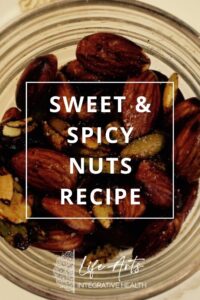
Pinterest
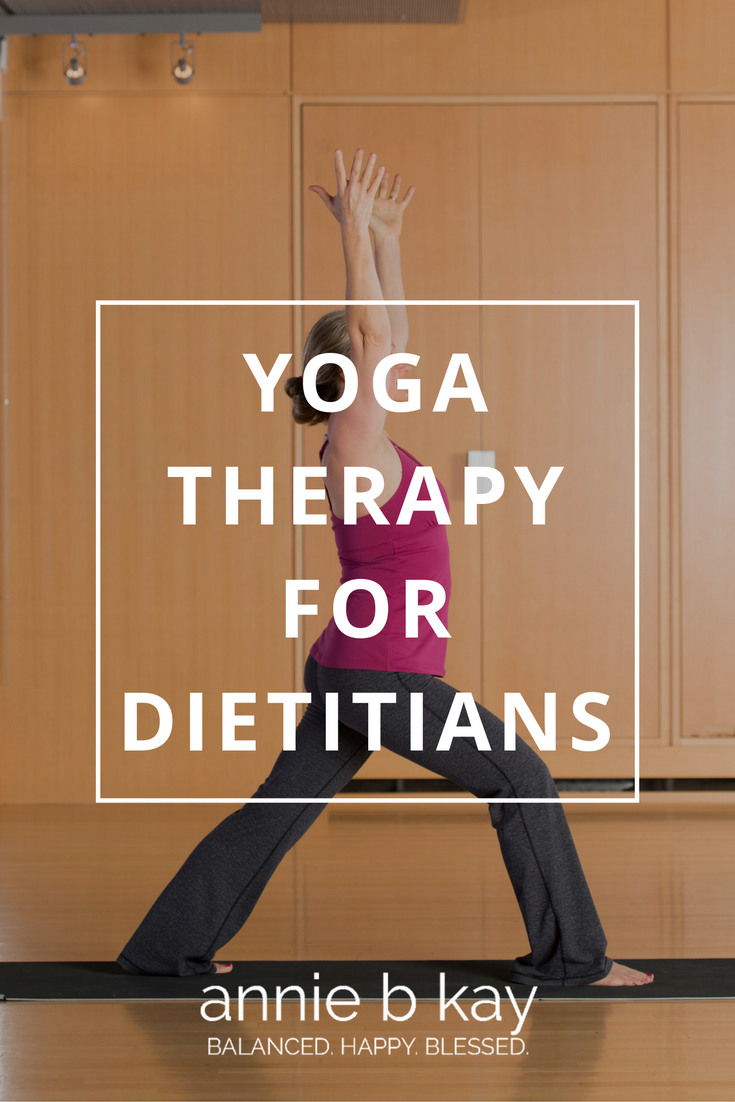
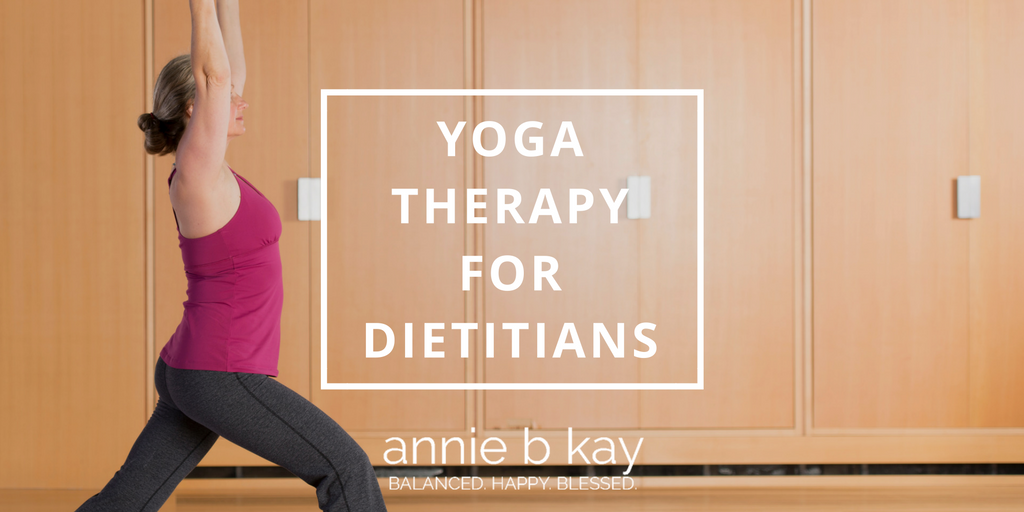
I love dietitians! They’re smart, well-educated and enthusiastic.
Unfortunately for them, they are also a great bargain relative to similarly-educated clinicians (I ponder what the Academy of Nutrition and Dietetics, AND, our professional organization has been doing in the last decade as nurses value has soared…and ours has not). There are many new certificate players in the nutrition field, and that’s good and there is room for everyone in the land where 7 out of 10 Americans die of preventable lifestyle-related chronic disease. I just don’t see, however, a credential with the required biochemical and broad nutrition coursework background, from community to food service to mind-body to communications, as dietitians. Nutrition is science, and psychology and biochemistry and even after nearly 3 decades, helping people with food often pushes me to the edges of my knowledge and ability. Granted, I’m biased. I am an RDN (registered dietitian nutritionist), so have the inside view of what it takes to earn and maintain it.
The way forward for dietitians (and everyone in a female-dominated profession) is for each of us to focus on our value. How can we, as individuals, boost our personal, professional and market value? One way is to cross-train. To expand your knowledge and expertise in several areas. Dietitians, here comes Ayurveda and yoga therapy.
Yoga & Nutrition
Those of you who have known me for a while know that I have been combining nutrition with yoga since before there was so much great science explaining the mechanisms of why it’s helpful. Yoga, it turns out, makes us better choice-makers. Yoga also creates an internal biochemistry that calms inflammation and when practiced regularly can be protective against chronic disease.
While I criticize the AND for our salary situation, I am also grateful for the ways they have supported me in my work as a writer and teacher of nutrition and yoga. I am thrilled to be speaking at FNCE in Boston this month, with world-renowned educator Dr. Sat Bir Khalsa of Harvard, and my friend and colleague the lovely Anu Kaur of the NIH. We’ll be talking about the science and practice of yoga therapy in dietetics, and highlighting how the field of yoga therapy is evolving through credentialing.
I’ll also be featuring colleagues in the field who are using yoga and yoga therapy in their nutrition practices. I’m inspired by this collection of practitioners. Thinking back to 2006-2007, when my first book came out, I was at FNCE (the Food and Nutrition Conference and Exhibition, the AND conference), and a tiny dark-haired woman came up to me at my booth, smiling ear to ear. She introduced herself, and only years later did I realize how sisterly we were. It was Beverly Price – a dietition-yoga teacher blending the two to help people with eating disorders. Now, Beverly owns a center in MI with an integrated staff including MDs, RDNs, and RYTs offering yoga-based therapies. She’s my business hero!
My work at Kripalu gives me a visible perch and happily, RDN-RYTs come to me when they are passing through. That’s how I met Andrea Leiberstein, a dietitian who works with mindful eating researcher Jean Kresteller on the program Mindfulness-Based Eating Awareness Training (MB-EAT), offered at Kripalu and elsewhere. Andrea also trains health professionals to use Mindful Eating to help with weight and eating.
There are so many more RDNs in this budding field and I look forward to featuring them over the next months here on the blog, but if you are at FNCE, check out our talk on Sunday morning. If our last talks are any indication, it will be STO, so get there early!
For anyone in DIFM, I will be giving a short demo on plant energetics with a plant-song device from Italy at the Happy Hour, But I have to say, the best reason to stop by there is to see the incomparable Kathie Swift get yet another award (how does she find room on her mantle for all her awards?) for Lifetime Achievement in Integrative and Functional Nutrition.
I will also be at the Member Product Marketplace on Monday, offering special pricing and free shipping on my 2 books, and a special on my CE-program: Yoga and Meditation: Tools for Weight Management through Wolf Rinke. Please do come by!
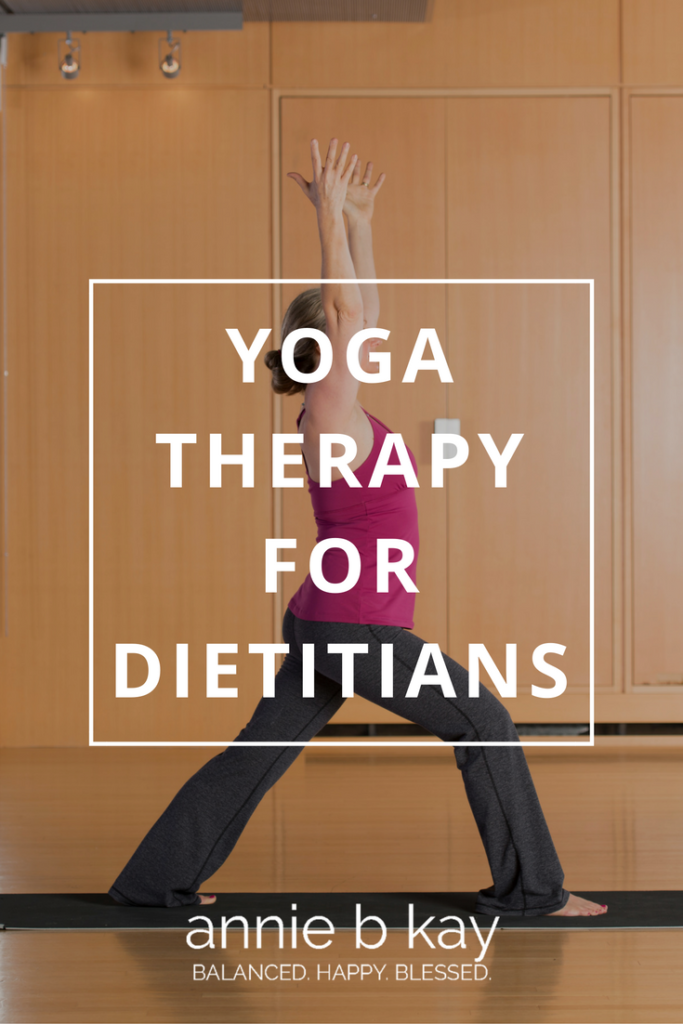
Pinterest
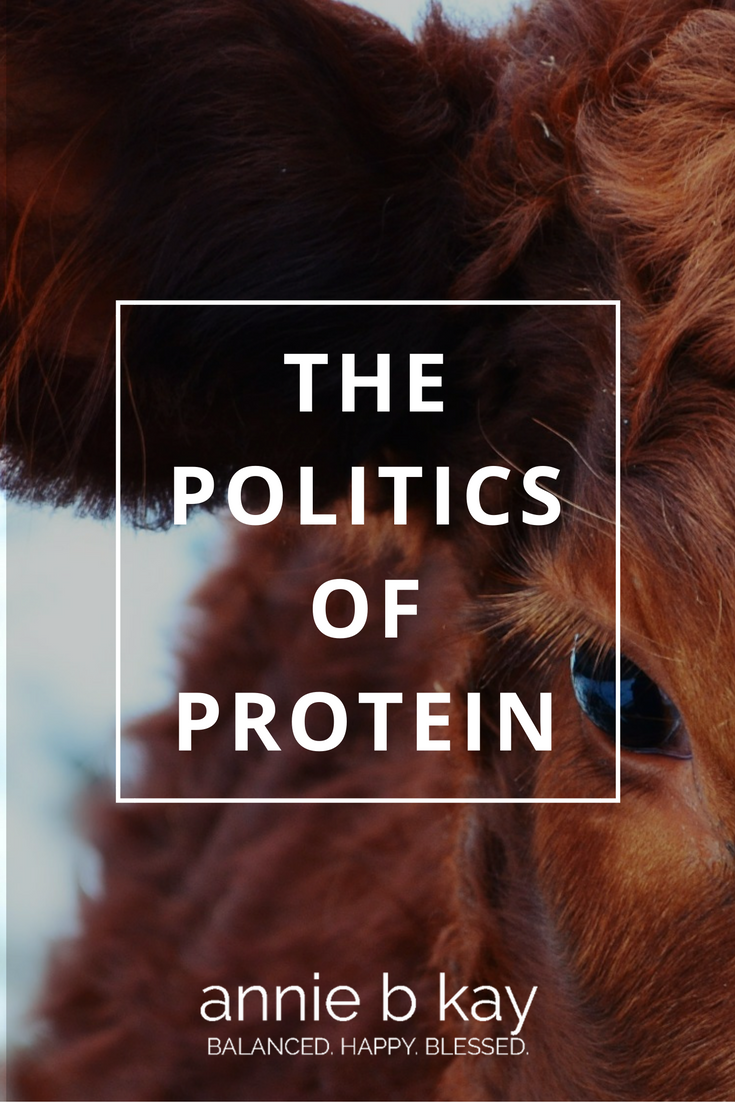
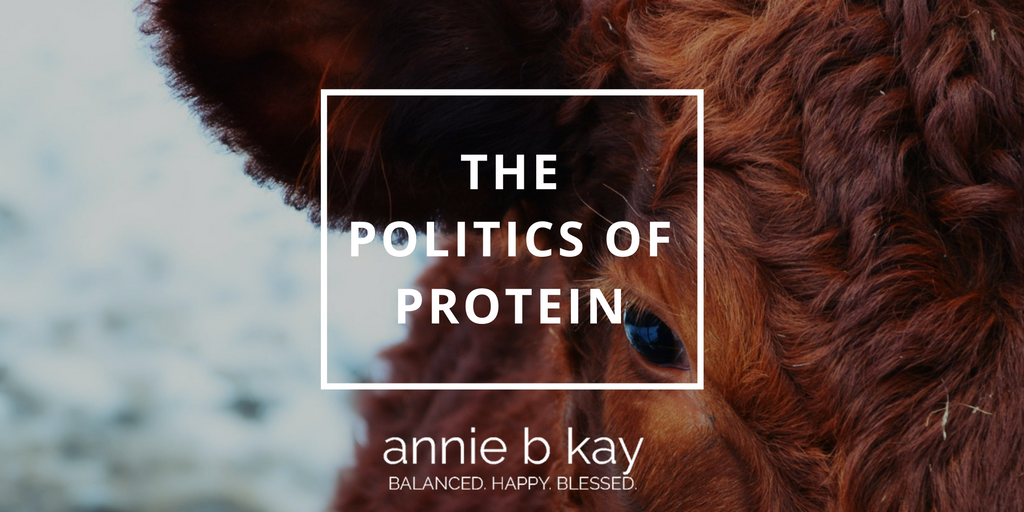
Protein is critical but most Americans overdo it. Animal-rich diets have a larger carbon footprint – not so good for the environment. In a vegan (animal-free) diet, protein is widely available. We humans love us some protein!
How do we eat in balance – healthy for us and also our beautiful planet?
Recently I was teaching with a colleague I love and respect, who mentioned that the latest thinking on protein needs is 30/30/30 (grams per day). I sat up – that’s a lot of protein and has environmental implications, I thought. At that level of intake, it’s difficult if not impossible to get adequate protein from a vegan diet. I wanted to know more. This higher recommendation is nearly twice what the NIH recommends (around 50 grams – a little more for men, a little less for women).
That sparked a months-long investigation for me, that’s not yet finished!
It sent me to pubmed, the NIH’s library of clinical research, to see where the recommendation came from. All I could find were a collection of papers from something called Protein Summit 2.0, and I’m grateful that now clinical research papers need to list funding, because there they were – many of the business interests and advocacy groups whom you’d think would support it. Sure enough, papers from that gathering recommended this higher level, with nods from the egg, beef, pork and dairy industry.
Protein is critical for health throughout the lifespan, and can be a challenge if protein needs are high, as in performance athletes and those healing from injury or disease. However, it has been well established that in a vegan diet, protein is widely available. Vegans do have to be aware of protein, and taking some with each meal and snack is a great guide – think nuts or nut butters, beans, seeds and seed butters, whole grains and most vegetables. Vegan diets with these foods at the center are some of the most healthful on the planet. The planet smiles on vegan diets too, as protein is the macro-nutrient that tends to have the greatest impact on carbon footprint.
For more on the link between protein and the environment, look at this set of graphics from the World Resources Institute, and the Environmental Working Group’s Meat Eater’s Guide.
Recently a smart RDN (Registered Dietitian Nutritionist) gave me the name of a researcher she respects who has been publishing studies on this higher level of protein. I have yet to investigate, but will (and will pass my take along).
What’s an eater to do? Here are my thoughts.
- No matter what your choice – vegan, flexitarian (an eater of a whole-foods plant-based diet with a little fish, eggs and dairy), or other – have some protein – mostly plant protein – with each meal and snack.
- If eating animals helps you nutritionally, please don’t feel bad about it. Honor the life that has been given. It is the cycle of nature and life and ultimately, nearly everyone gets eaten in the end.
- Honor the fact that protein is richly sustaining, and takes more resources to create – so, resist the temptation to overdo it. It is human nature to overdo it. Protein powders likely have the greatest carbon footprint of all – could you do it with an egg or seed powder? Focus on eating the CDC-recommended 9-13 servings of plants daily. Can you have a bit more of your protein from plants without suffering nutritionally?
What about me? I am a flexitarian – I eat about 1 serving of animal per day, in the form of mostly eggs, but occasionally fish or meat. I put whole grass-fed milk in my morning coffee, and enjoy a bit of ghee (clarified butter) from grass-fed cows. I mostly hit the recommended number of plants, but left to my own devices my taste would be pure starch! So, when life is full I have to remind myself to eat plants, and do on occasion retrace my day and find myself swimming in toast, and potatoes. Then it’s time to begin again, dust myself off and chop up some – hale kale!
Here are a couple of my plant-protein-rich recipes:
I’m big on soups!
What about you – how do you honor protein and meet your needs?
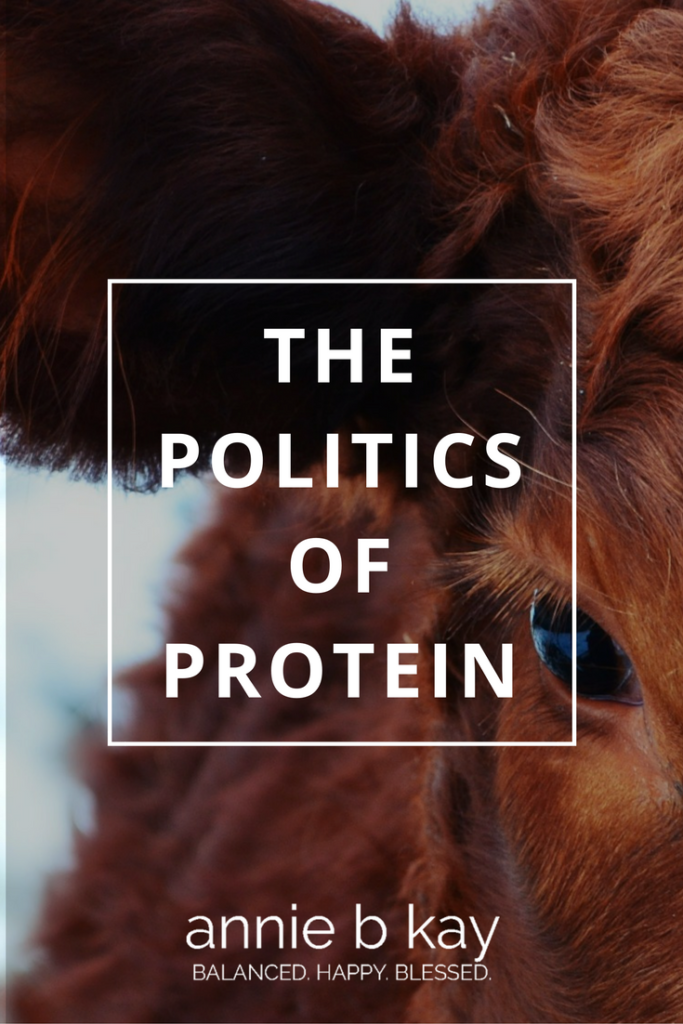
Pinterest


















